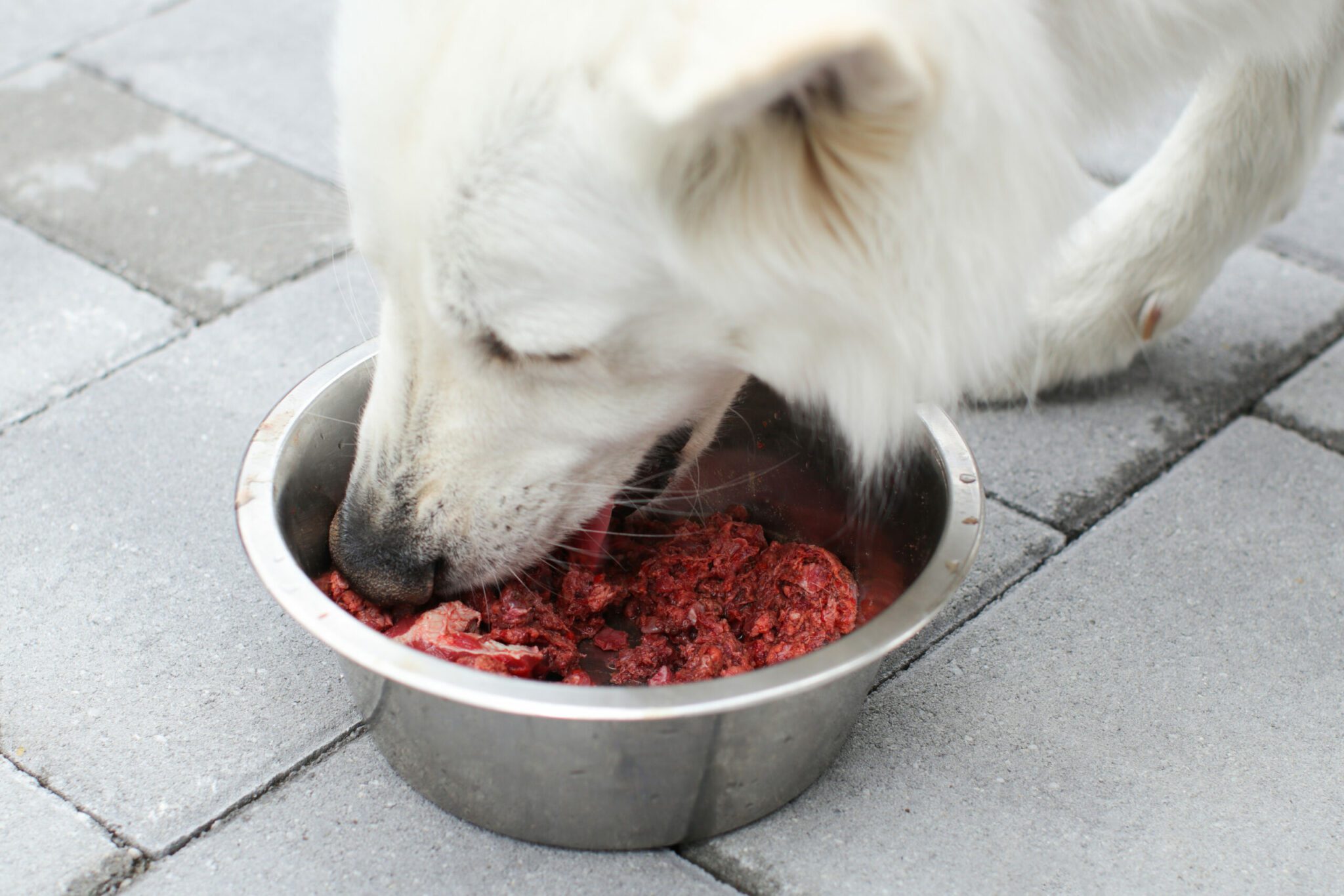Feeding dogs raw meat is a hot topic among pet owners. While some swear by the raw food diet, others worry about the health risks. So, is it safe for dogs to eat raw meat? The short answer: it can be, but it comes with serious risks and requires careful handling and veterinary guidance. Let’s break it down.
Why Some Owners Choose Raw Meat for Dogs
Supporters of raw feeding (often referred to as the BARF diet – Biologically Appropriate Raw Food) believe it mimics what dogs’ wild ancestors ate. Common perceived benefits include:
- Shinier coat and healthier skin
- Cleaner teeth
- Higher energy levels
- Smaller, firmer stools

Risks of Feeding Raw Meat to Dogs
Despite potential benefits, feeding raw meat carries significant health risks — not just for dogs, but for humans in the household as well.
1. Bacterial Contamination
Raw meat can carry harmful pathogens like Salmonella, E. coli, and Listeria. Dogs may not always show symptoms, but they can shed bacteria in their saliva and feces, posing a risk to humans — especially kids, elderly people, and immunocompromised individuals.
2. Nutritional Imbalance
A homemade raw diet often lacks the full spectrum of vitamins, minerals, and nutrients a dog needs. Without professional formulation, long-term raw feeding may lead to deficiencies or excesses.
3. Bone Hazards
Raw diets often include raw bones, which can splinter and cause choking, tooth fractures, or gastrointestinal injuries.
4. Not for All Dogs
Dogs with weakened immune systems, puppies, or senior dogs may be more vulnerable to infections and digestive upset from raw food.
What Do Vets Say About Raw Meat?
Most mainstream veterinary organizations, including the American Veterinary Medical Association (AVMA) and the FDA, do not recommend raw feeding due to:
- Lack of peer-reviewed evidence proving its superiority over cooked diets.
- High risk of zoonotic disease transmission.
- Challenges in maintaining a nutritionally complete homemade raw diet.
Some holistic and integrative veterinarians may support raw diets — but only when carefully balanced and prepared under professional guidance.
If You Still Want to Feed Raw Meat…
If you’re considering a raw diet despite the risks, consult your veterinarian or a board-certified veterinary nutritionist. Here are essential safety tips:
- Use human-grade meat from trusted sources.
- Freeze meat before serving to reduce parasites.
- Handle and store raw meat with strict hygiene (disinfect surfaces, wash hands thoroughly).
- Balance meals with added vegetables, supplements, and bone alternatives.
- Never feed raw pork, which can carry parasites like Trichinella.
Safe Alternatives to Raw Meat
If you want to avoid raw feeding risks but still provide a nutritious, meat-forward diet, consider:
- Lightly cooked meals (gently steamed meat and veggies)
- Freeze-dried raw food from reputable pet food brands
- High-quality commercial dog foods that include real meat as the main ingredient
Final Verdict: Is It Safe for Dogs to Eat Raw Meat?
Feeding dogs raw meat is controversial and not without risks. While some dogs may thrive on it, the dangers of bacterial contamination, nutrient imbalance, and bone injuries are real. For most dog owners, cooked, balanced diets or vet-approved commercial foods are the safer, more practical choice.
Always speak with your vet before starting a raw meat diet, and never attempt to formulate one without professional help.